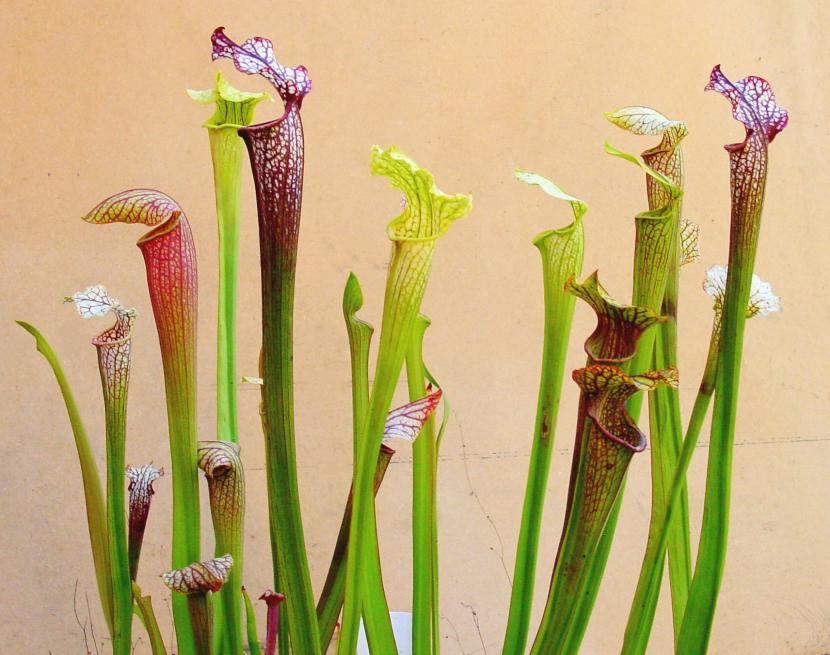
All the Sarracenia they are one of the most common and easy-to-care carnivorous plants. We can find them for sale in nurseries and garden stores, and once at home we will immediately realize that they only need a minimum basic care.
But be careful: it is important to know what your preferences are, since otherwise we would lose them prematurely. So so that no problems arise, then we are going to talk to you about them, pitcher plants.
Origin and characteristics
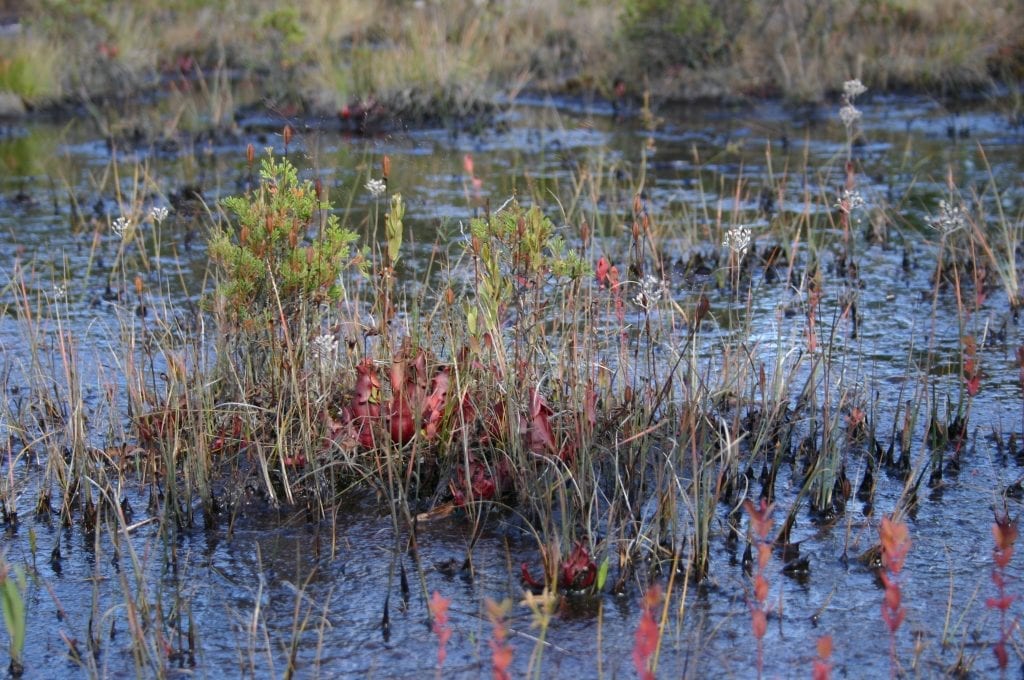
sarracenia purpurea in habitat.
Image - Wikimedia / FBot
The Sarracenia are carnivorous plants native to North America, specifically from eastern Texas, the Great Lakes area and southeastern Canada. The leaves grow in such a way that they form a tube on the edge of which secretes a nectar that attracts insects, which tend to fall inside because if we look we will see very short hairs that grow downwards and that are very slippery for prey.
But it also has its good side: towards spring they produce flowers, also rich in nectar, that sprout from a long stem with very bright colors, such as pink.
Main species
- Saracenia Flava.: It is native from southern Alabama to southern Virginia and South Carolina. It produces greenish trap-leaves with red veins that can exceed one meter in height.
- sarracenia minor: known as a hooded carnivorous plant because of the shape of its leaf-traps, it is native to northern Florida to southern North Carolina. It measures a maximum of 40cm in height.
- sarracenia purpurea: It is native to the eastern coast of the US, and eastern and southern Canada. Its leaves are of a very striking red color, whose height does not exceed 30cm.
- sarracenia rubraKnown as the sweet carnivorous plant, it is native to southern Mississipi, through Alabama, Florida and Georgia, to Virginia and South Carolina. Its trap-leaves are a very pretty pink-red or green color, and it can reach 50cm in height.
What are their cares?
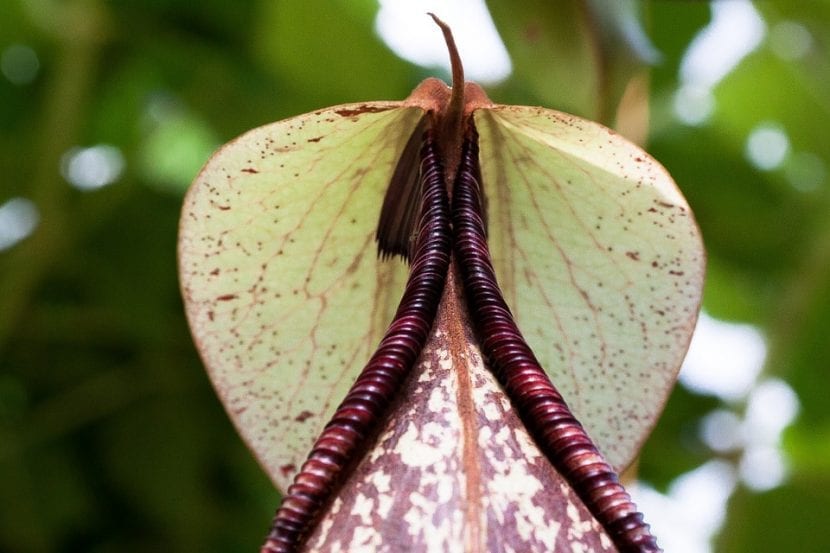
If you want to have a copy, we recommend that you provide it with the following care:
Location
The Sarracenia They must be outside, in full sun. They need to be exposed to the light emitted by the star king in order to have good growth and development.
Earth
- Garden: they grow in acid soils lacking in nutrients. For this reason, as normal is that the land you have does not meet these characteristics, what you do is make a planting hole of about 50cm x 50cm, cover the (internal) edges with resistant plastic -PVC- and the base with shading mesh; and then filled with blonde peat mixed with perlite in equal parts.
- Flower pot: mix white peat and perlite in equal parts.
Irrigation
They are plants that want a lot of water, since they tend to live in lands that are constantly humid. Thus, you have to water very, very often, so much so that you can put a plate under them and fill it up every time you see it getting empty. But, yes, in autumn-winter take it off to prevent them from rotting.
Use rain, distilled, or osmosis water.
Subscriber
You do not have to pay them. Carnivores feed on insects that are trapped in their traps; so that its roots not only do not know how to digest the compost but it also burns them.
Planting or transplanting time
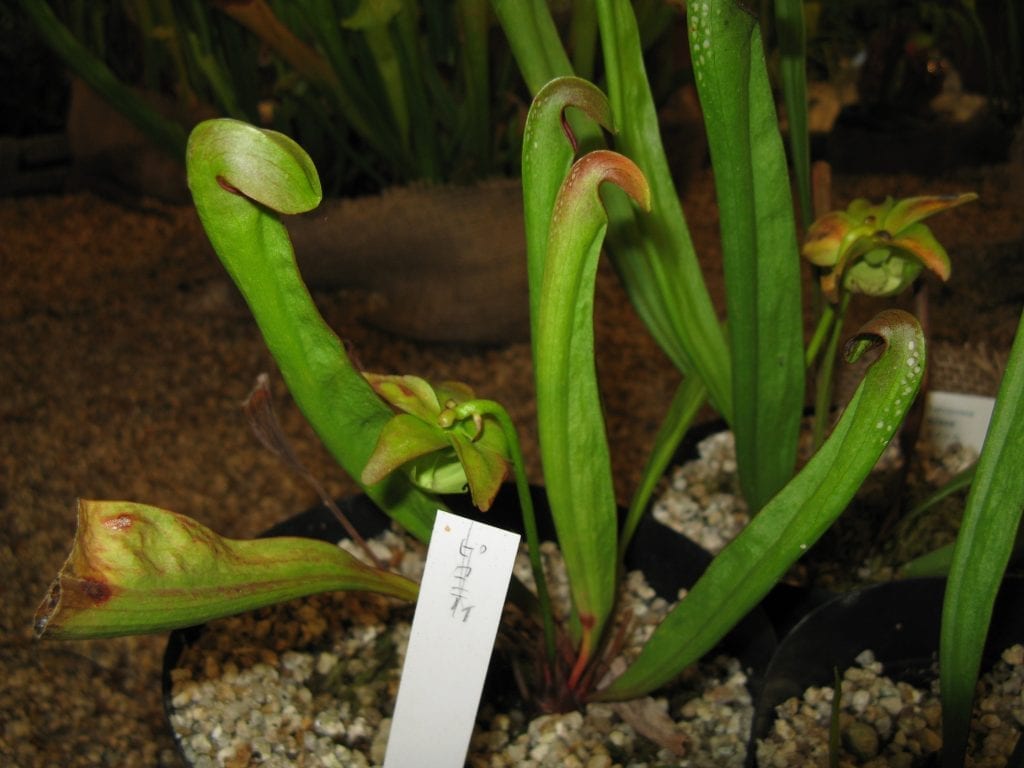
sarracenia minor
Image - Wikimedia / KENPEI
In spring, when the risk of frost has passed. If they are in pots, they must be transferred to larger ones every two or three years, following this step by step:
- First, the new pot is filled with equal parts peat and perlite, slightly less than half.
- The plant is then removed from its old pot. If it doesn't come out, tap it from different sides.
- Next, it is planted in the new pot, making sure that it is neither too high nor too low.
- Finally, it is finished filling with substrate and watered.
Multiplication
It multiplies by seeds in spring. The step by step to follow is as follows:
- A 10,5cm diameter pot is filled with 50% mixed white peat and perlite, and watered.
- Then, the seeds are spread on the surface, trying not to get piled up.
- Afterwards, they are covered with a very thin layer of substrate previously moistened with water.
- Finally, the seedbed is placed outside, with a plate underneath.
If all goes well, they will germinate in 2-4 weeks.
Pruning
You have to cut the dry traps and wilted flowers with scissors previously disinfected with pharmacy alcohol.
Plagues and diseases
They do not usually have, but limpet mealybugs they can appear in dry and warm environments. They are removed with a brush or with diatomaceous earth (you can get it here).
Rusticity
From experience I will tell you that withstand frosts down to -2ºC without being damaged, but if you live in a colder area I advise keeping them in a greenhouse without heating.
Do they need to hibernate?
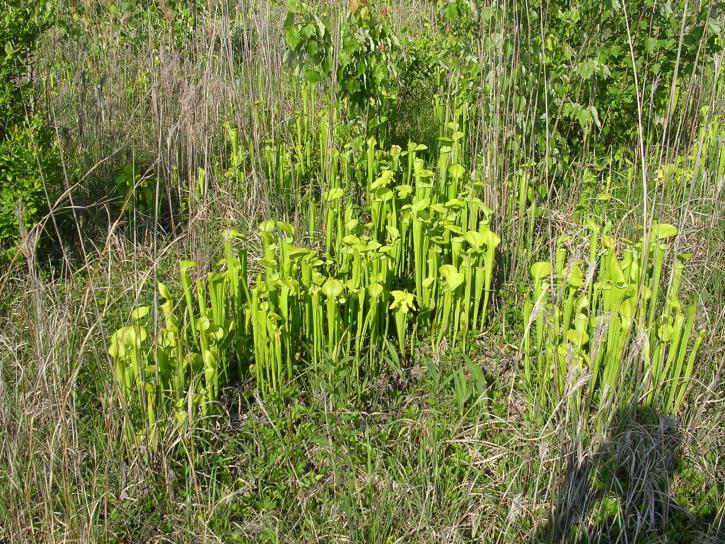
Sarracenia oreophila
Yes. Sarracenia need to be cold during the autumn-winter to be able to resume their growth strongly in spring. For this reason, they cannot be grown in hot tropical climates or without frost.
During this period, they will not be watered more than when the substrate is seen to be drier than wet. You have more information at this link.
What do you think of these carnivores?
Very clear advice, wonderful illustrations and timely information. Thank you very much guys from jardineriaon.com
Hi miguel.
Thanks for your words 🙂
Thank you very much for all the comments. They are very good and easy to learn My congratulations
Hello Salvador.
Thank you very much